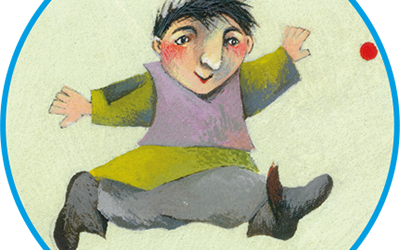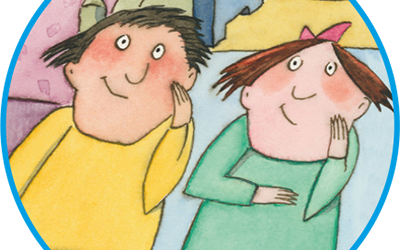THE BIRTH OF THE “STORIES OF CHILDREN” EXHIBITION
Federico, Michelangelo, Igor, Dora, Willy and others are the protagonists, with their compelling and yet utterly diverse stories, of the “Stories of Children” exhibition.
Each of them occupies a display structure, with around 12 original drawings of the illustrated and already-published books, allowing the visitor to enter into the fascinating world of these characters.
The book “Agata Smeralda” was conceived on the occasion of the exhibition itself and was published by the Franco Cosimo Panini publishing house in Modena. It is, of course, the flagship book of this initiative.
“Agata Smeralda” came about after the artist Letizia Galli visted the Istituto degli Innocenti di Firenze. “Entering this place that I was unfamiliar with,” – reveals Letizia Galli –”I discovered this world that had been untouched for centuries, born from the will and generosity of exceptional people during the early Renaissance in Florence and aimed at providing refuge to the many children who were bought into the world, only to be abandoned due to necessity or rejection. It provoked a real emotional shock in me. The citizens of Florence wanted to offer the orphans and the poor a real safe-haven, appointing the most famous architect of the time, Filippo Brunelleschi, to oversee the project. Even before this discovery, my ‘Stories of Children’, being the characters of my books, narrated very particular situations, from the most extreme poverty (Igor and Abdou) to the dreams of those children who fought to become genius adults (Federico, Michelangelo, etc.), to those in distress (Dora), who triumph because of their own courage. The tale of Agata came to me right after that visit. It recounts, in a totally imaginary way, the life of the first child left in the baby hatch of the hospital and the determination to rely solely on their own autonomy of thought in evolving throughout the course of their existence. It is a sort of magic thread and an extended universe, connecting to the many other stories of children, orphaned or otherwise, who are presented in the exhibition.”




 Agata Smeralda
Agata Smeralda HIS NAME IS IGOR
HIS NAME IS IGOR Comme le papillon
Comme le papillon Willy’s Stadt
Willy’s Stadt MICHAEL THE ANGEL
MICHAEL THE ANGEL MONA LISA, THE SECRET OF THE SMILE
MONA LISA, THE SECRET OF THE SMILE Il sogno di Federico
Il sogno di Federico La folle équipée
La folle équipée À la courbe du Joliba
À la courbe du Joliba Il bottone di Sara e Pietro; La scatola di Sara e Pietro; La palla di Sara e Pietro
Il bottone di Sara e Pietro; La scatola di Sara e Pietro; La palla di Sara e Pietro La mitologia, le avventure degli dei; La mitologia, gli eroi e gli uomini
La mitologia, le avventure degli dei; La mitologia, gli eroi e gli uomini UNPUBLISHED SERIES ON ECOLOGY
UNPUBLISHED SERIES ON ECOLOGY



 Michele Iodice lives and works in Naples. He is the creator of numerous performances, productions, installations and decorations in situ. The location is reanimated by the artist as a space to be interpreted, offering up a significant transformation. The artist has also created theatrical set designs and designer objects, with great inventive profusion and an anticipated alternation between great works and small objects, between the conceptual and the decorative. Arising in him is a renaissance impulse reproposed in a modern synthesis.
Michele Iodice lives and works in Naples. He is the creator of numerous performances, productions, installations and decorations in situ. The location is reanimated by the artist as a space to be interpreted, offering up a significant transformation. The artist has also created theatrical set designs and designer objects, with great inventive profusion and an anticipated alternation between great works and small objects, between the conceptual and the decorative. Arising in him is a renaissance impulse reproposed in a modern synthesis.